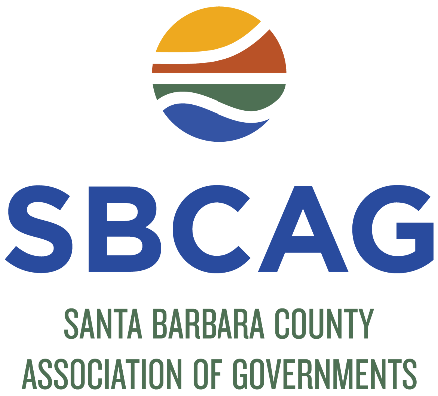Funding

State Funds Seven Transformative Affordable Housing and Climate-Friendly Projects in Santa Barbara County
October 13, 2023
Santa Barbara County Association of Governments (SBCAG) receives more than $5 million to support projects that will catalyze development in Santa Maria’s downtown core, build a prototype 3D printed affordable home in Goleta, pave the way for a countywide data dashboard for bicyclists and pedestrians, and invest in electric vehicle charging infrastructure in the most remote community in Santa Barbara County.
Santa Barbara, Calif. – The state announced this week that it will fund seven projects in Santa Barbara County aimed at increasing housing production, implementing sustainable land-use strategies, and promoting alternative modes of transportation such as walking, biking, rolling, and transit.
Santa Barbara County Association of Governments (SBCAG) receives nearly $5.3 million in funds from the state’s Regional Early Action Planning Grants’ Program of 2021, also known as REAP 2.0.
“We are excited to receive this funding from the state that will allow us to invest in sustainable infrastructure and affordable housing initiatives throughout our region,” said Jenelle Osborne, chair of Santa Barbara County Association of Governments Board of Directors. “From a prototypical single-family home constructed with innovative 3D printing technology to a permit-ready Accessory Dwelling Unit program in the City of Lompoc, our projects will prioritize climate resilience and active transportation options while also advancing equitable access to housing for all our residents.”
SBCAG Board of Directors approved the state application in December 2022 to fund seven projects countywide:
- City of Santa Maria Downtown Revitalization Infrastructure Improvements ($2.5 million) to increase sewer capacity and multimodal improvements in downtown Santa Maria including a bus rapid transit station and traffic calming improvements. The city seeks to make improvements needed to catalyze development in its urban core.
- Permit Ready Accessory Dwelling Unit Program ($450,000) for the City of Lompoc to expedite the permitting process and reduce pre-construction fees for housing. The city seeks to spur accessory dwelling unit development to provide choice and affordability in housing and will share its work with other municipalities.
- Prototype 3D Printed Affordable Home House ($375,000) by the Housing Trust Fund of Santa Barbara County to build the first 3D-printed affordable housing unit in Santa Barbara County as a demonstration of concept. Despite its one-unit nature, it will provide for a proof of concept for low-cost housing construction and navigate building codes and permitting for novel construction methods.
- Santa Barbara County Active Transportation Data Dashboard ($525,538) by University of California Santa Barbara researchers to develop regional bicycle and pedestrian data and maps countywide that will inform future bike, walking, safety and accessibility planning efforts and funding opportunities.
- Jacaranda Court project ($395,000) by the Housing Authority of the City of Santa Barbara to accelerate the architectural process for a 63-unit middle income housing development to replace a city-owned commuter parking lot downtown Santa Barbara.
- San Jose Creek Multipurpose Path ($734,933) in the City of Goleta to support a 1.5 mile Class 1 bikeway connecting Calle Real, Old Town Goleta, UCSB and the Coast Route. It provides safe and convenient connections to employment, commerce, and services.
- EV Charging Infrastructure and Alternative Transit Incentives Perkins Place Project ($275,000) by the Housing Authority of the County of Santa Barbara for EV charging infrastructure, transit ridership, and multimodal amenities in the most remote community in Santa Barbara County – New Cuyama. This project represents an investment in a historically underinvested portion of the region.
“We are incredibly excited about the REAP 2.0 grant funding that will allow us to bring Jacaranda Court to life and provide much-needed affordable housing in downtown Santa Barbara,” said Rob Fredericks, executive director/CEO of the Housing Authority of the City of Santa Barbara (HACSB). “The project’s 63 units will go a long way in meeting the needs of moderate-income households, who often struggle to find affordable housing close to work and transportation. With plenty of vehicle and bicycle parking options, including EV charging spaces, we are also working to reduce dependence on cars and promote a more sustainable way of living. The grant will be instrumental in ensuring that all local regulations and building codes are met, and that the community positively accepts this project. We cannot wait to welcome our new residents to Jacaranda Court in October 2025.”
Jennifer McGovern, president and CEO of the Housing Trust Fund of Santa Barbara County remarks, “We are grateful for the support of the Santa Barbara County Association of Governments and State HCD for our prototype 3D printed affordable home project. This pioneering project will be the first 3D printed home in Santa Barbara County, will demonstrate the use of surplus church properties to produce affordable housing and test the potential for innovative 3D robotics construction to produce a variety of affordable housing types that can be completed on urban and suburban infill sites, including tiny homes and accessory dwelling units.”
Administered by the California Department of Housing and Community Development (HCD), the Regional Early Action Planning Grants of 2021 (REAP 2.0) program created by AB 140 (2021) makes progress toward a statewide housing goal of 2.5 million new homes by 2030 with 1 million of those being for low-income residents.
The state allocated $600 million for planning and capital projects in support of Sustainable Communities Strategies in each region. In Santa Barbara County, this initiative is referred to as Connected 2050. Through a population-based formula, approximately $5.3 million became accessible for the Santa Barbara County region through SBCAG.
To learn more about REAP 2.0, visit the HCD website.



